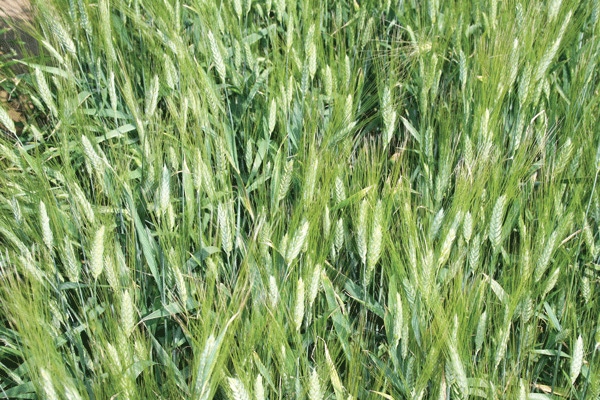
Oklahoma and Texas wheat looks better than expected
In Oklahoma, 37 percent of the wheat is rated good to excellent, 48 percent fair, and only 15 percent poor to very poor.Texas wheat is rated 21 percent good to excellent, 41 percent fair, and 38 percent poor to very poor.Southern Kansas is in about the same shape as northern Oklahoma.
November 3, 2011

Given that most of the hard red winter wheat planted in Oklahoma and Texas is located in Exceptional Drought (D4, the highest category) areas, the 2012 wheat crop is in better condition than expected. Oklahoma wheat stands, except in the panhandle, appear to be in much better shape than wheat in the Texas panhandle.
In Oklahoma, 37 percent of the wheat is rated good to excellent, 48 percent fair, and only 15 percent poor to very poor. Texas wheat is rated 21 percent good to excellent, 41 percent fair, and 38 percent poor to very poor. The Texas condition index is 49 compared to 59 last year.
Reports from elevator and Cooperative Extension personnel indicate that 2012 Oklahoma wheat yields have the potential to be above average. Excellent stands have been established in central and north central Oklahoma. Good stands have been established in south central Oklahoma.
The southwestern corner of Oklahoma has below average stands. Western Oklahoma and the panhandle regions are relatively poor. Stand quality diminishes as you go west.
Early estimates of plantings indicate that Oklahoma’s planted acres may be six to eight percent higher than 2010’s 5.1 million acres. Texas planted acres may be slightly higher than 2010’s 5.3 million acres.
Some producers planted wheat on a failed summer crop (cotton) acres as a cover crop. Much of these acres may be disked under to plant for 2012.
Drought conditions may result in higher yields. Research shows that planting wheat in October increases the odds of above average yields and that is when most of the wheat was planted. Wheat was planted for grain, not grazing. In addition, much of the planted area has topsoil moisture which will keep the wheat alive for a few weeks.
Drought conditions may also result in increased weed and volunteer wheat problems, which have the potential to lower yields and/or increase costs. Because of drought conditions, weed and old crop wheat seeds failed to germinate before planting the new wheat crop.
Lest the market get overly optimistic, topsoil moisture in Texas major wheat areas is 37 to 79 percent very short, 32 to 48 percent short and 8 to 15 percent adequate. Subsoil moisture is also lacking.
In Oklahoma, 38 percent of the state topsoil moisture is rated adequate, 31 percent short and 30 percent is rated very short. Going from east to west, top soil moisture declines. Most wheat is grown in the western half of Oklahoma.
Oklahoma’s subsoil moisture is 8 percent adequate (northeastern Oklahoma), 22 percent short and 70 percent very short. In many wheat areas, the top soil moisture is being removed by the wind and temperature on top and by the dry soil beneath the wheat root zone.
Southern Kansas is in about the same shape as northern Oklahoma. Top- and subsoil moisture is short but Southern Kansas still has relatively good stands of wheat.
Wheat producers have done a nearly miraculous job of establishing the 2012 hard red winter wheat crop. The crop is now dependent on timely rains.
The 90-day forecast is for above average temperatures and below average precipitation. The key is having timely precipitation to keep the wheat alive until March and April. If it is alive – and wheat is a resilient plant – March and April is when this crop will be made.
Harvested acres as a percentage of planted acres may be higher, weather permitting, in Oklahoma and lower in Texas. A shortage of winter wheat pasture is expected to limit stocker grazing, which could result in a higher percentage of harvested acres in Oklahoma. In Texas, some of the wheat acres will probably be converted to cotton and other summer crops.
You May Also Like



